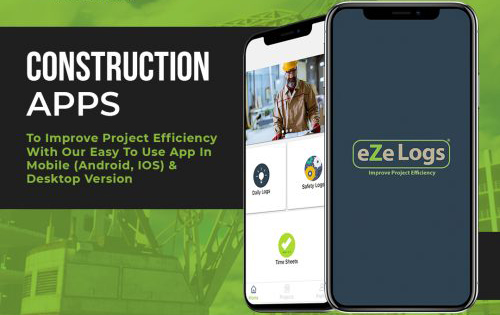In 2023 Construction projects have become more complicated over time and now require increased levels of organization and coordination to guarantee their successful outcome.
Guarantees Success in Construction Projects provides an in-depth examination of project tracking techniques and tools available today, which can assist construction teams to stay on track with their projects, ensure successful completion, and remain in control. This guide introduces practical project tracking methods from their initial planning phases right through the delivery of their projects.

This guide also addresses the significance of progress monitoring, the advantages of project tracking software, and best practices for tracking construction projects. Construction teams can use this resource as a compass for ensuring their projects remain on schedule while taking all the steps needed for ultimate success.
Project Management – Challenges and Uncertainties
Construction project management can be an intricate and challenging endeavor, requiring skill, knowledge, and experience to oversee projects effectively from inception through completion.
Construction project management presents numerous obstacles. Construction jobs involve multiple stakeholders, including architects, engineers, contractors, subcontractors, suppliers, and clients – each having different goals and objectives that must be fulfilled for a successful outcome of any construction project. Project managers must ensure these goals are accomplished as part of their job duties.
Construction project management presents another distinct set of challenges when overseeing multiple tasks and activities simultaneously. From planning and design through procurement and construction, projects require many activities for successful completion; an effective construction manager must coordinate these various elements to deliver projects on schedule and within budget.
Project management presents yet another challenging element to its practitioners – managing risk. Construction projects often pose financial and safety-related uncertainties that a project manager must identify and oversee to ensure successful completion.
Construction project managers face four main challenges during project administration – changing circumstances must be anticipated and managed accordingly to complete projects on schedule and within budget.
Construction project management can be an intricate and demanding field, but with the necessary skills, knowledge, and experience, it’s possible to successfully oversee an entire construction project from its inception through completion.
Project Tracking Software’s Benefits for Success
Project tracking software is an indispensable asset to any business or organization that must keep tabs on multiple projects at the same time. It helps keep you organized while saving both time and energy – here are just a few advantages of project tracking:
Improved Organization
Project tracking software allows you to stay organized by keeping all your projects under one roof, with simple ways of keeping up with each one’s progress, assigning tasks, and setting deadlines – helping keep projects on schedule while remaining efficient with managing multiple efforts at once. It makes life a lot simpler!
Increased Efficiency
Project tracking software can save time by automating certain tasks, like reminding you when an action needs to be completed – helping ensure deadlines are met on schedule and projects completed on schedule.
Improved Collaboration
Project tracking software makes collaboration simpler between team members. You can assign specific tasks to individual team members and keep an eye on their progress – this makes sure everyone works towards one shared goal and stays aligned as one team.
Increased Visibility
Project tracking software provides you with greater insight into each project’s progress, making it easy to view each task’s status and identify which tasks have fallen behind schedule – this enables you to quickly detect any potential problems and take corrective actions immediately.
Project tracking software can be an invaluable asset to any business or organization that must keep tabs on multiple projects at the same time. Not only can it keep you organized and save time and energy, but the right project tracking solution can also even ensure all projects are completed on schedule and budget.
Tracking Process of Construction Projects
Project tracking is an integral component of any construction project from pre- to post-construction stages, from planning through completion. Monitoring its progress helps ensure completion on time and within budget as well as identify any issues before they escalate into serious ones.
Pre-Construction
Prior to construction starting, it is crucial that an effective project tracking process is in place. This should include setting an overall timeline, detailing tasks that must be accomplished, assigning team member responsibilities accordingly, and keeping everyone aligned throughout. Creating such a tracking procedure ensures everyone on the team stays on the same page so project completion occurs on schedule.
Construction Monitoring
Tracking progress during construction can help identify any potential problems before they turn into major ones, providing time to rectify them. Monitoring each task as well as overall project progress helps achieve this objective and will aid in the early identification of any impending obstacles to productivity.
Post-Construction
Following completion, it is crucial to evaluate the project tracking process in order to identify any areas for improvement as well as successful areas that were completed on schedule and efficiently. Doing this will ensure future projects run more smoothly.
Project tracking is an integral component of any construction project, helping identify any potential issues before they escalate into major ones and thus ensure completion on schedule and within budget.
Real-Time Communication and Collaboration
Real-time communication and collaboration tools have become essential assets to businesses operating in today’s digital environment. Equipped with appropriate technology, teams can remain connected in real-time, no matter their physical locations – staying productive together seamlessly!
Real-time communication and collaboration tools enable teams to interact immediately without waiting for email exchanges or any other forms of correspondence to arrive in real-time, sharing ideas, documents, information, and feedback in real time and getting immediate replies back from colleagues and members of other teams. This gives everyone access to fresh perspectives quickly.
Real-time collaboration tools provide teams the means to work together on projects, even if they’re located in different parts of the world. Teams can collaborate effectively, even across time zones!
Real-time collaboration tools provide teams with tools for staying in real-time connection and working on projects regardless of location, ensuring teams remain cohesive even if members come from various nations or continents.
Real-time communication and collaboration tools have become essential in today’s digital economy, providing teams with tools for staying in constant touch and working collaboratively across locations – whether near or far. Through such technologies, teams can stay together quickly and effortlessly, no matter their geographical position – sharing ideas, documents, and feedback in an instantaneous fashion.
Budget Monitoring and Administration
Budget tracking and management are essential to running any successful business, helping you remain aware of finances while optimizing resources. By employing various tools and strategies, budgeters can keep an eye on spending within their limits and plan ahead for expenses with confidence.
As part of budget tracking and management, the first step involves creating a budget. Your plan should account for all income, expenses, and savings goals you may have set forth. Once this plan has been put together, spending can then be tracked using either manual methods or budget software programs.

Once you’ve tracked and analyzed your spending, the next step should be analysis and assessment of it. Search out areas in which you could reduce spending or identify savings opportunities to create an annual budget plan with this information.
An integral component of budget tracking and management is setting up a system to keep tabs on your progress – this may involve using either a spreadsheet or budgeting software – this way, you’ll ensure you stay within limits set for yourself by your budget.
Budget tracking and management are integral to running any successful business. By employing effective tools and strategies, budgeters can easily keep an eye on their budget to ensure it doesn’t overshoot its limits; and with regular analysis sessions taking place, they can make sure the most is made from their resources while staying on top of finances.
Risk Evaluation and Avoidance
Risk prevention and mitigation are central elements of running any successful business. Taking active steps to identify and limit any potential threats to your venture, such as financial losses, reputational harm, or any other adverse impacts, can protect it against financial setbacks as well as reputational dings that might otherwise erode revenue streams or incur costs to continue operations.
At the core of risk management and prevention lies identification. A risk analysis can assist in this effort by providing insight into potential hazards related to business operations. An appropriate risk evaluation must take into account the likelihood, impact, and steps available for mitigating risks.
Once potential risks have been identified, it’s essential to develop a risk management plan and execute it. A good risk management plan includes strategies for mitigating risks – for instance, implementing safety protocols, purchasing insurance policies, or creating contingency plans – along with an evaluation mechanism so as to track its efficacy over time.
Finally, it is crucial that all employees understand their roles and responsibilities within a risk management plan and how it should be executed. Regular training and communication between managers can ensure all are on board and adhere to it accordingly.
By taking steps to identify and mitigate potential risks to your business, you can protect it against financial loss as well as negative repercussions. Risk prevention and mitigation are integral parts of running any thriving enterprise.
The Bottom Line
It outlines all of the latest tools and best practices used for project tracking from its inception through final completion. So construction professionals can use these techniques to ensure projects are finished on time, within budget, while mitigating risk associated with delays or errors – ultimately making



